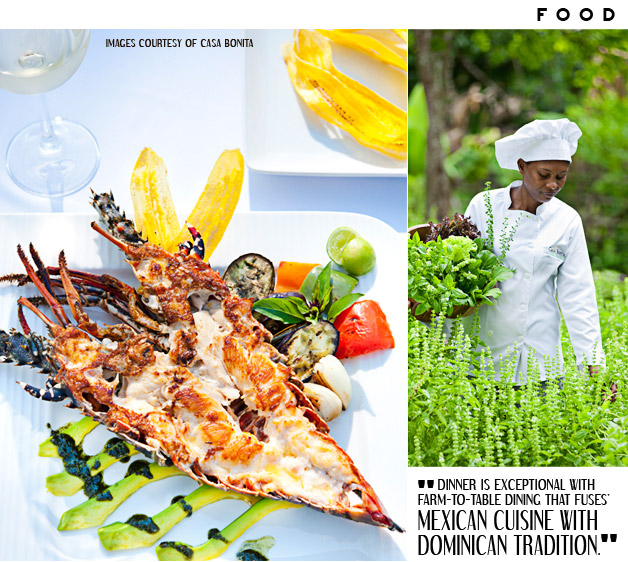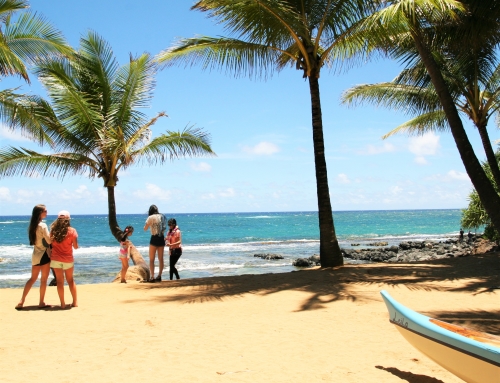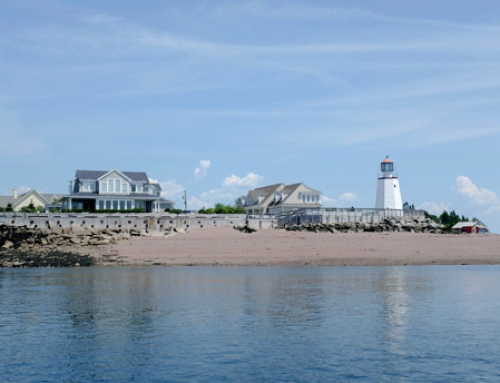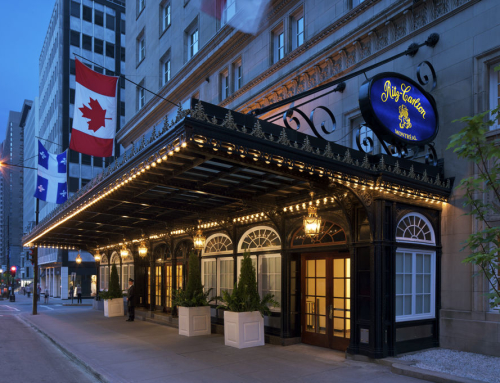It begins like this: “Morning, WestJetters! Who here is in a wedding paaarty!” shouts the stewardess over the microphone.
“Woo hoo!” returns the crowd.
“And where my Punta Cana party people at?” she teases.
“Yay!” they clap, as hands simultaneously shoot in the air.
If you haven’t guessed it yet, I’m on a flight. It’s early morning and I’m sitting in the middle seat of a very packed plane with a group of very excited passengers. Our attendant is laying on the charm thick; getting the crowd psyched for the four-hour trip that will land us in the Dominican Republic, one of the Caribbean’s most popular islands.
By the looks of it, it’s working out pretty well for her: The drink cart is already making its second round, and the din of raucous chatter is gaining momentum with every mile we cover.
I decide to keep my distance. True, I rarely turn down a cocktail (just ask my friends), but it’s important to keep my wits about me. When this plane lands in Punta Cana, 90% of the passengers will disembark and head straight to the city’s many all-inclusives — with the promise of golf courses and swim-up bars in their very near future. As for me, my journey will have just begun. I’m set to meet two local guides and a jeep that will take us for an eight-hour drive to Barahona, a province touted as a budding eco-tourism region. And, unlike the cookie-cutter stay my fellow tourists are likely to experience, I’m signing up for a bit of the unknown. The itinerary is pretty sparse, save where I’ll be sleeping – five-star eco-lodges – and where I’ll be swimming – a remote beach or two. (Do I sound disappointed?)
Meanwhile my seatmates – a group of leather-clad Hells Angels – order another round of Canadians, because: “Hell, we’re on vacation, man!” and that becomes my cue to plug in and tune out. In a few hours time, I’ll be on my own, into the wild. That’s as much of a buzz as I need.

To Visit:
When I was researching Barahona prior to traveling there, I found very little intel about the region online; in fact, I found nothing at all. My only source was an outdated Wikipedia page that, as we know, leaves very little to the imagination. What gives? “People don’t come here as much as Puerto Plata or Punta Cana,” says Carlos Batista, one of the Ministry of Tourism’s associates, and my intrepid guide for this week in the wild. “Mostly because they don’t know it exists.”
We’re in aforementioned Jeep, driving up the coast from the capitol city of Santo Domingo along a bumpy highway that wraps itself around the mountains like a snake would slither on the road. Our 4-wheeler is navigating us through yawning gapes of cracked asphalt and a surprising number of cattle, while I’m being tossed around the back seat like a hacky sack. Can’t say I’m that bothered though, mostly because my eyes are transfixed with the landscape that is playing out in front of me.
In the vein of sounding dramatic, the panorama of nature is beyond astounding, and trumps any other vista I’ve seen from Hawaii to Mustique. We buzz past massive mango fields while the trees cast their cool shadows on the grass and bright, multi-coloured favelas that appear chiseled into the formidable emerald mountain. Everything is so alive and raw, including the water. Oh, El mar Caribe! The cerulean glow it emits is blinding, as though a million of the most precious diamonds are under its surface.
So, like I said: dramatic. “Barahona offers the greatest biodiversity in the country,” says an enthusiastic Batista. “Jungles look like the Congo and then, an hour later you’re in the desert with cactus and rust-red soil. This is where nature’s most marked contrasts really occur.”
And that’s exactly why it is here, in the South, that the country is intent on creating a new tourism that respects the land and follows a more eco-friendly philosophy. Without question infrastructure needs to be built first — think drivable roads and highways — but the true investment is being devoted to the development of sustainable boutique hotels, while protecting the many natural habitats and zoological-botanical reserves where the country’s flora and fauna exist. Cancun, this is not. In fact, builders are forbidden from building anything taller than a coconut tree. “Mexico is exactly an example of what not to do,” says Batista. “There are too many high-rises on the beachfront which has killed off the coral reefs. We’re not interested in repeating that.”
Speaking of sustainability, I’m starving so we stop in the quaint village of Paraiso (translation is, quite literally, paradise). Surrounded by yet more forest and rivers that lead into the Caribbean Sea, we pop in to one of the many local hangouts that dot the side of the street, and feast on our first meal from the ocean and the land: buttered dorado, grilled lobster tails, smashed yuka and, without further ado, the much-hyped tostones with plenty of salsa picante. What hits you first is not so much the food (although it is unspeakably delicious), but the human strata that overflows: Local fisherman are hawking their fresh catches of crab; teenage boys overwhelm passerby cars with jars of cashews and bowls of grilled corn, groups of men play dominos while moms give chase to their pack of little ones running the alleyways barefoot and giggly. Maybe it’s the affect of the cold Presidente’s we’re guzzling, but life seems to slow down to a very comfortable pace. It’s a nice slice of island life.
To Stay:
“Once we go in, there’s no turning back ok?” Fast forward another several hours and we’re at the bottom of a very steep climb uphill that will lead us into the tangles of the rainforest and our digs for the first night. Carlos is slinging our bags onto the roof of an even bigger and badass 4-wheeler, while I’m trying to wrap my arms around the truck’s skeleton in preparation of a very bumpy ride ahead. I’m told it will take roughly 20 minutes until we reach our destination, but as I’m learning pretty quickly in the Dominican, Island Time is a whole different concept. Well over an hour later — after we traverse Tour de France worthy ascents, dodge some mountain goats and the occasional waterfall — we land at the foot of wooden gates that open onto Rancho Platon.
Lauded as an “eco-adventure tourism project”, this family-owned property built on a former coffee plantation from the ‘50s touts the benefits of being fully immersed in nature, while still experiencing the height of luxury.
I’m met with a freshly squeezed glass of lemon juice, while we’re toured around the sprawling grounds. Originally the boutique hotel started as a kid’s camp where children could leave city life and experience the restorative powers of nature and, at first glance, you get the idea. Plunge ponds are retrofitted with braided ropes ideal for climbing and canon balls, along with an 80-meter long waterslide that ends in a pool of crisp, untreated, water. I catch the sight of a double-rainbow arching over the Nizao River below us, its roar offering prime rapids for tubing and kayaking, while above, the tree tops I note multiple zip lines and trails for horseback riding, hiking or a mountain bike.
For the owners, adventure had to be at your fingertips, but it couldn’t come at the cost of the land. They worked around the natural waterways so they could take most advantage of the indigenous rivers and waterfalls; all electricity (via hydroelectric generators) is generated on-site, and no construction could overly disrupt the fauna that abounds the area. Even the aesthetic riffs off this all-natural vibe, like the wooden walkways lit by Tiki torch, the plethora of coloured linen hammocks hanging from tree branches and the property’s gorgeous bamboo-accented outdoor dining area with classic rocking chairs, thatched roof and a menu proffering local delicacies like stewed goat with green pepper and shrimps in coconut broth. And of course, don’t forget the Mamajuana, a heady cocktail of rum, red wine, tree bark and herbs guests shoot to wash it all down.
The four cabins also stay on point. My favourites: the Treetop Cabin built high above the palm trees offering and open-air terrace and spectacular views, or Cascade: a family-friendly abode with a living room, bunk beds and private waterfall perfectly suited for a morning wake-up. “Our goal is for our guests to appreciate and preserve what nature has in store for us,” says co-owner Manuel Toral Campiz “so our next generations may enjoy a pollution-free and sustainable environment.”
To Go:
I wake up to a promise of another three-hour drive (knowing it’s likely four) but am assured the trek will be worth it. We’re heading to Bahia de las Aquilas; an 8 km stretch of beach that lives within a UNESCO-protected part of the Jaragua National Park and is minutes away from the Haitian border. En route we pass through Las Cueva (literally “The Cave”), a tiny municipal district of Cevicos that has numerous caves offering pro-level diving expeditions, and have a quick photo opp at Laguna de Oviedo; a hyper-saline, mint-green saltwater lake — the second largest in the country – that is home to pink flamingos, endangered rhinoceros iguana and mangroves.
The more miles we clock the less villages we drive through and the more military checkpoints we stop at because, unlike most places in the DR that experience boons of tourism, we’re headed off the grid and more than 30 kms away from any recognizable sign of life. The road and topography changes simultaneously: Lush green pines and tropical hardwoods give way to multi-shaped cacti, and an arid landscape that has a dead-on likeness to Arizona. Traveling — not unlike the journey thus far — is a practice in patience and resolve. A sturdy 4×4 will get you through the treacherous roads to the National Park’s entrance, but if the bay and a dip in its cool waters is on your ultimate agenda, plan ahead and book a boat ride from a local villager to get you there.
When I was told by my sources that this beach was the most “spectacular in the world,” I took it with a massive grain of skepticism. That is, until I was actually saw it. It’s beautifully serene — we were the only ones there — with powder-fine white sand and lazy turquoise waves that twinkle. The rest of the day is spent between popping the Presidente, lunching on crab mofongo and languid ocean swims until gloomy clouds beckon us to drive on.

To Unwind:
My last stop on the DR tour is another eco lodge Casa Bonita located on the edge of the country’s only biosphere reserve. Neighbour to the Sierra Barahuco Mountains and running Rio Barahuco and Riosito rivers, the property has always held itself against a high standard for sustainable living and within minutes during check-in, I see how serious they are about the claim. The lodge was built using local materials such as coral stone and wood from native higuero trees, while my ocean view suite — complete with 360 degree windows and private plunge pool — is simple and elegant with white linens and walls accented with palm wood and wicker furnishings.
I start with a luxe massage at dusk in the Tanama Spa (named after a butterfly refuge) located in the jungle forest under a thatched roof lit by candlelight. Playing with the natural elements of the region, they use local Larimar stones and lavender, rosemary and citrus herbs (all of which come from their own gardens) that release the most intoxicating scent.
Dinner is equally as exceptional with farm-to-table dining that fuses Mexican cuisine with Dominican tradition. Produce comes from the local community, herbs and vegetables are harvested from their own organic garden and cheeses made by young adults from the Monte Sacro organization in Polo. Our three-course meal starts with icy margaritas to cool off the ceviche spiked with Serrano chills; beef tenderloin in a lush red wine and mole sauce (with chocolate made from Chef’s own cacao plant) and, for desert, a duo of pineapple and papaya marinated for 24 hours in cognac and local honey and wild anise.
To Play:
The night went long, so the morning means Motulenos Eggs; scrambled with tomato sauce, peas and friend plantain followed by a strong café con leche. The staff — all of which are local and sweetly hospitable — encourage me to surf, snorkel, play tennis or hit the Canopy Tour. I opt for the latter and find myself a thousand yards up in the trees with a pair of young guides who speak no English save a few perfunctory warnings like “Put hand here” and “Don’t put hand there”. No matter, as I manage to make my way across all 10 cables to the eventual sounds of the boys yelling, “Professionale! Professionale!” as I whip through the wind and, sadly, the end of my stay.
The End:
I’m back at the Punta Cana airport and, admittedly, having a moment not that dissimilar to Leonardo DiCaprio’s character in The Beach. It’s that exact moment in the film where Richard has to leave his tiny, reclusive island for the mainland and feels immediately assaulted by the sounds, smells and frenzy that pervades. I’m suffering a similar fate by way of overflowing tour buses, couples jostling golf clubs and far too many women with braided and beaded hair.
Then it hits me, I realize by writing these words I’m giving you access to my secret oasis. I’ll gladly pass on the map, if you do me one favour: only invite those open to adventure and not afraid of the unknown. Otherwise, the idyll will be lost and then we all lose.
Published November 30, 2013











